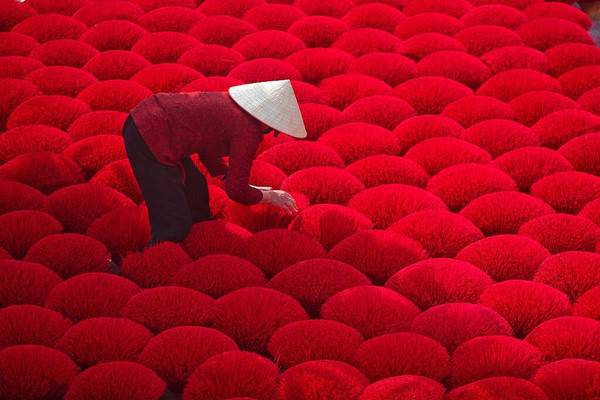Hoi An Travel Guide: What to See and Do in Vietnam’s Most Enchanting City
Discover Hoi An, Vietnam’s ancient town with lantern-lit streets, historic sites, and unique cuisine. Explore its timeless charm and cultural heritage. Plan your trip today!
Where in the world can you find such untouched beauty of ancient architecture after nearly 300 cycles of the four seasons? This is Hoi An - the famous Old Town in south-central Vietnam…
1, Location
Situated along the picturesque Thu Bon River in Quang Nam Province, 30 kilometers south of Danang, Hoi An is a classic Eastern Oriental gem. Thanks to its strategic position by the river and access to the sea (to the east), it was one of Southeast Asia’s major trading hubs in the 16th century, attracting merchants from the West.
2, History
Hoi An has survived the centuries while preserving its original charm. Two key historical periods shaped the town: the era of Japanese and Chinese dominance, followed by Western influences from the Dutch and Spanish in the 16th and 17th centuries. During its trade with China, the town was known as Hai Pho ("Seaside Town"). Initially, it was divided - on the other side of the "Japanese Bridge" lay a Japanese settlement. Later, the city became internationally recognized by the French and Spanish as Faifo, an important trading port. These multicultural influences have left a lasting imprint on Hoi An’s culture.
3, Natural conditions
Anyone visiting Hoi An cannot deny that nature has blessed this place with exceptional conditions. The climate is tropical, with distinct wet and dry seasons. The average daily temperature exceeds 21°C and drops to around 16°C at night. Travelers should visit Hoi An and enjoy its pleasant weather!
4, Architecture
In Hoi An, visitors can admire a series of ancient streets and houses that have remained almost intact - moss-covered walls, traditionally styled roofs, and old furniture arranged as in the past. Hoi An is a crossroads of cultures: early Cham civilization, Asian influences (Japanese, Chinese, Indian), and European trade traditions from the 16th century. The colorful guild halls, founded by Chinese merchants from Guangdong and Fujian, still stand today as a testament to the town’s trading roots.
Although Hoi An’s charm is always visible, on the 14th day of each lunar month, the town takes a step back in time. The blend of Oriental and Western architectural styles makes Hoi An unique, attracting all lovers of classical beauty!
5, Festivals
Tourists should not miss Hoi An’s exceptional festivals, especially the Full Moon Festival (on the 14th day of each lunar month), when the town comes to life with colorful lanterns and decorations. Another important event is the Mid-Autumn Festival (on the 14th day of the eighth lunar month). However, the most extraordinary celebration is the Lantern Festival - on the 15th day of each lunar month, the city glows under the light of hundreds of silk, glass, and paper lanterns, while all electric lights are turned off. It is a magical, romantic, and mysterious sight!
6, Religion
The 14th day of the lunar month is also a Buddhist prayer day. Locals make offerings of food and incense on ancestral altars and visit Hoi An’s numerous pagodas. The scent of incense and the sound of chants create a mystical atmosphere, transporting visitors back to the time of their ancestors.
7, Cuisine
Hoi An is famous for its unique cuisine, which is both delicious and affordable. One of its most renowned dishes is Cao Lau - a rice noodle dish with a texture similar to wheat noodles. The secret lies in the water, which is drawn from a special well in the town. The noodles are served with roasted pork, crispy croutons, and fresh herbs. A visit to Hoi An would not be complete without trying this dish!
8, What to see in Hoi An?
As a historic city, Hoi An offers numerous cultural landmarks of exceptional value:
- Japanese Covered Bridge (Chua Cau) - the symbol of Hoi An, built in 1600 by Japanese merchants.
- Quan Cong Temple and the Museum of Culture - perfect spots for history enthusiasts.
- Traditional houses - Phung Hung, Quan Thang, and Tan Ky, showcasing the architectural blend of Japanese and Chinese influences in Hoi An.
- Assembly Halls - Guangdong, Fukien, and Trieu Chau, reflecting the city’s multicultural heritage.
- Buddhist pagodas - Ong pagoda, Quan Am Minh Huong Buddhist Temple
9, Shopping
Hoi An is also a paradise for shopping lovers! The city offers wonderful souvenirs, handicrafts, antiques, silk fabrics, and artistic paintings.
Hoi An is a city of colorful lanterns, ancient houses, and a unique cultural fusion. Its people are warm and welcoming, always ready to greet every traveler. Are you ready for an unforgettable journey through time?




 English
English French
French Italian
Italian





 FR
FR 

